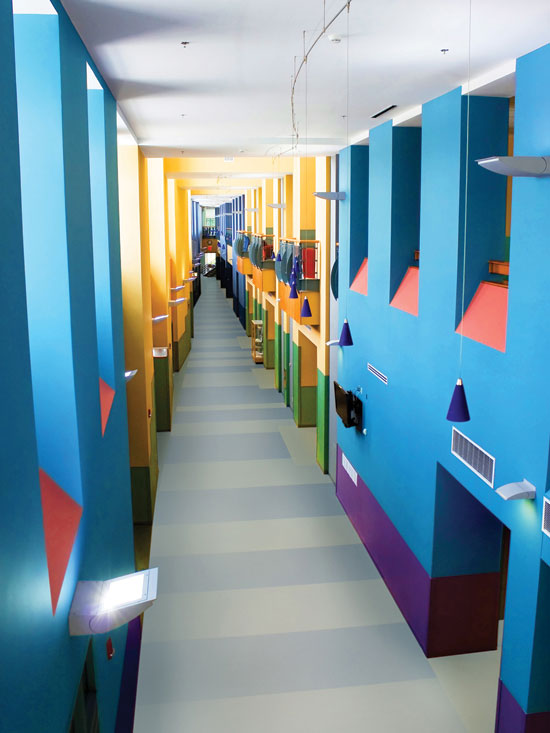Functional Color and Design in Education Environments
Education Room By Room
Colors can make a major impact in every room in the school, and the following sets out guidelines room by room.
Entrance
Colors in school entrances set the tone for the experience ahead. As younger students enter school, the environment should welcome them and provide feelings of support and enrichment. Showcasing student's artwork in the corridors demonstrates the talents of the student body, while adding color, pattern, and interest—and changing art displays sends the message that the school is a dynamic and vibrant place to learn.
As older students enter their schools, feelings of opportunity, social interaction, support, sophistication and a connected, enriching atmosphere sends the message that the experience beyond holds the keys to the future.
Corridors
More tolerance exists in these areas with respect to color, and they are ideal spaces to reflect a positive and happy environment. Corridors and stairwells with bright colors can lift school spirits. The color scheme should be attractive and give the school a distinctive personality. In the lower grades hues may be lively; in a multistoried or multi-wing school, each corridor can be treated differently. Design features such as central, appealing staircases could encourage students to take stairs in multistoried school buildings, thus increasing their physical movement and, ultimately, improving health.
Complementary color schemes are quite appropriate. For example, light orange walls offset with blue doors, or light-green wall, with lower chroma red doors work well. Long hallways are opportunities to incorporate graphics, art, hue-blocking visuals and design solutions to brighten and shorten these areas. Lockers, too, may be used to add color and visual variety. Older students will appreciate the unifying cultural identity that can be created with color and design.
 |
Long hallways are opportunities to incorporate color along with graphics, art, hue-blocking visuals, and design solutions to brighten and shorten these areas. Photo courtesy of Shutterstock.com |
In today's schools, spaces within corridors have emerged and been turned into individual learning areas. Color palettes are endless and may range from neutral or warm hues on walls with cool door accents to mid-tone colors on walls that correlate to a local connection of regional influences.
Colors can also help students learn their way around a school, with hallways serving as “way finders.” This is particularly important for primary school children as young learners will identify with brighter graphics and colorful elements in the corridor to connect with the building and find it a friendlier atmosphere. Graphics and identification offer attractive solutions to way finding by adding impactful design and making the environment fresh and fun.









